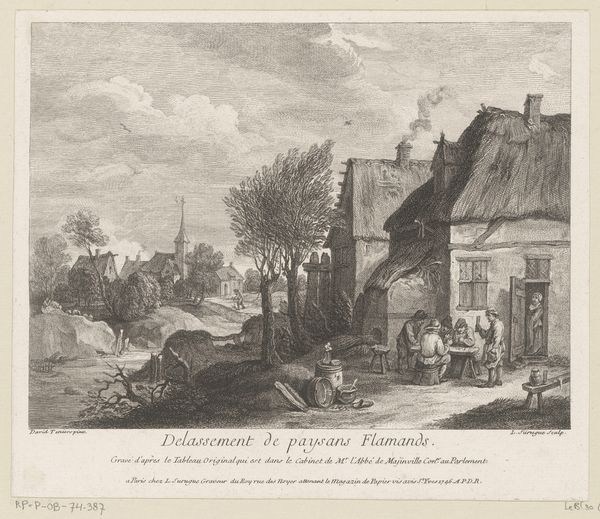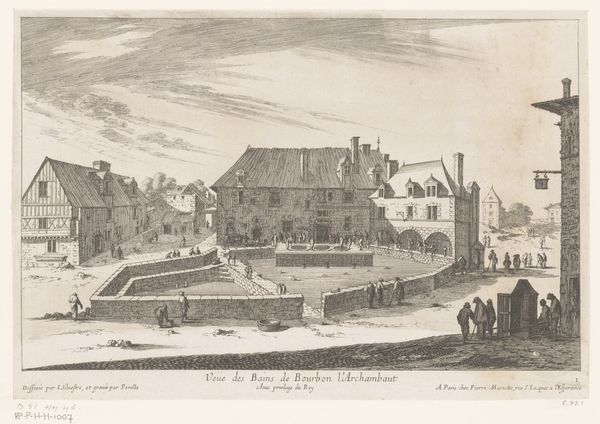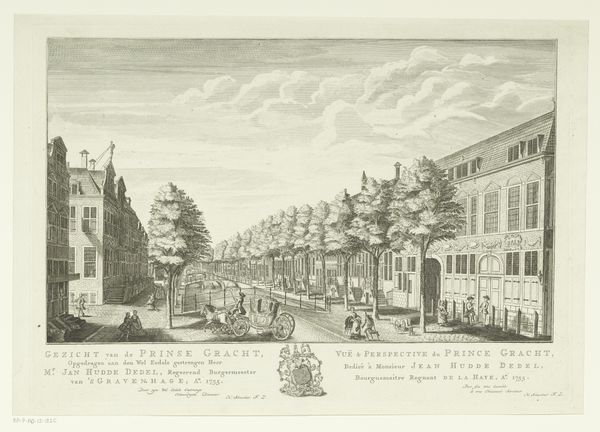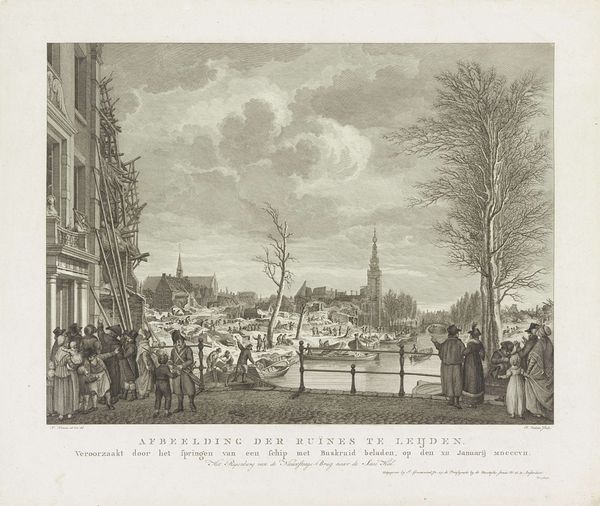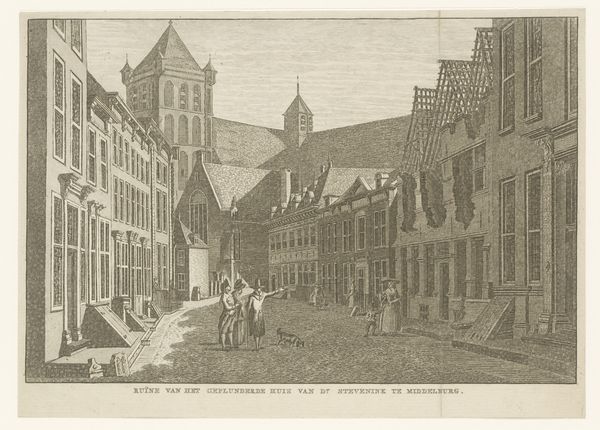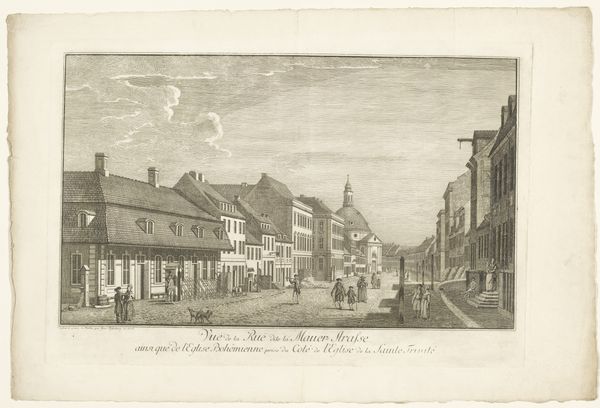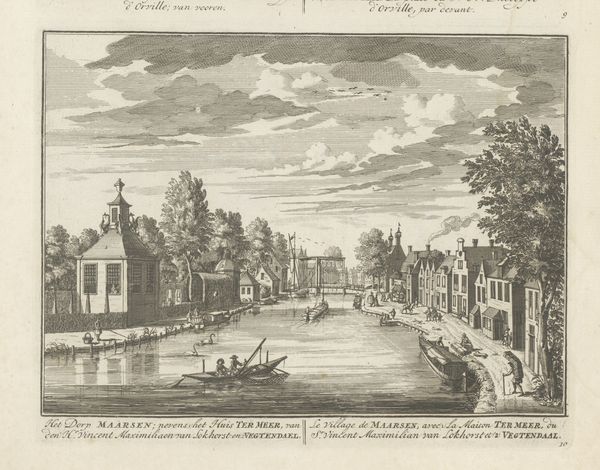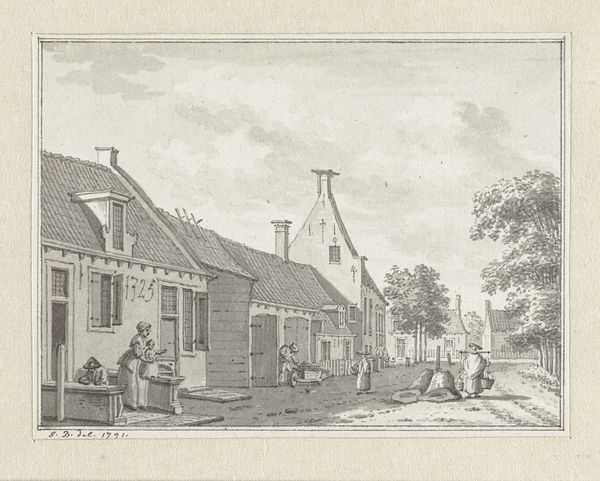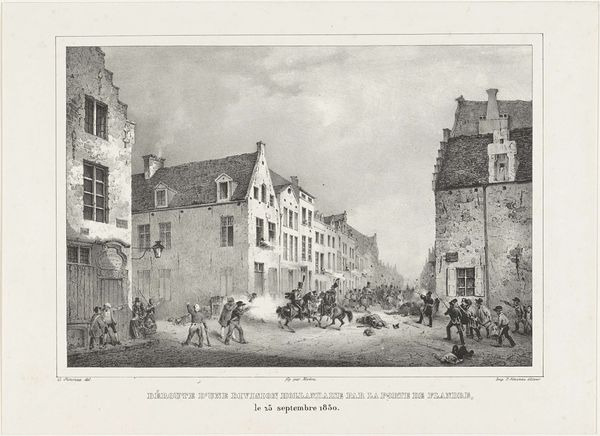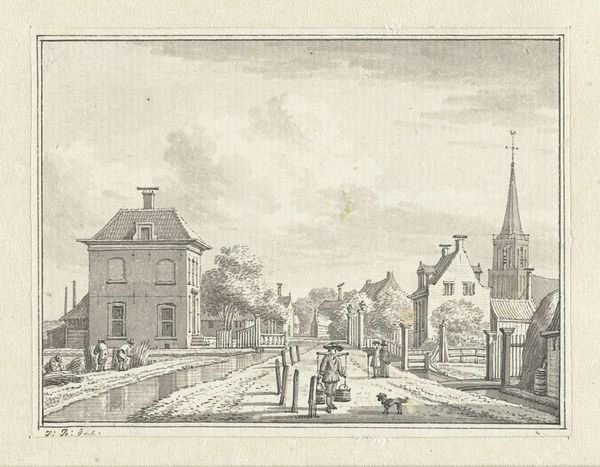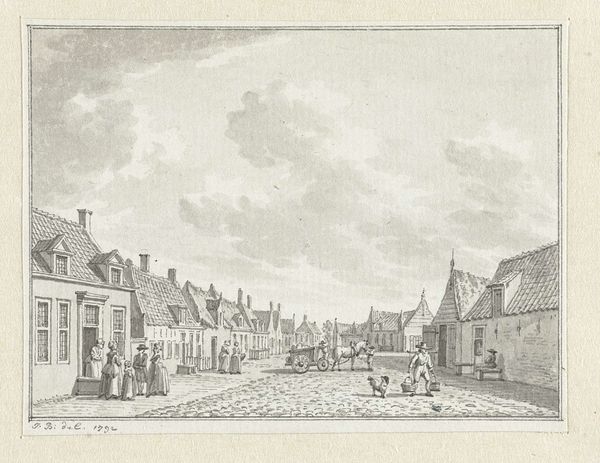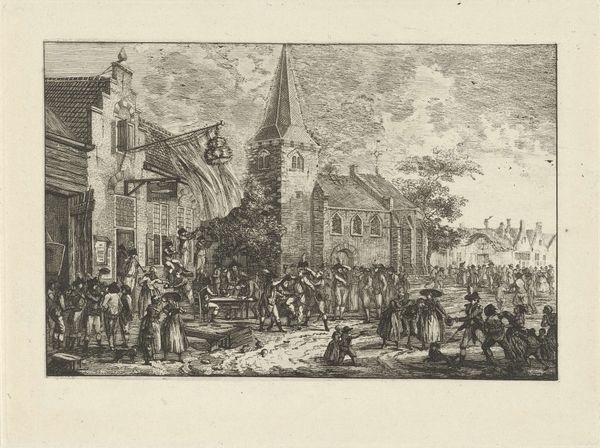
print, engraving
#
narrative-art
#
dutch-golden-age
# print
#
landscape
#
cityscape
#
engraving
#
realism
Dimensions: height 212 mm, width 333 mm
Copyright: Rijks Museum: Open Domain
Curator: This engraving is titled "Overstroming in de Palingstraat te Vlissingen, 1808" by Izaak Jansz. de Wit. It captures the devastating flood in Vlissingen on the morning of January 15, 1808, currently held at the Rijksmuseum. Editor: My first thought is how stark and desolate it appears. The grayscale emphasizes the raw, almost brutal scene of the flooded street, with the texture of the water finely rendered to give it an eerie life-like quality. Curator: Indeed. The historical context is critical here. Vlissingen was a significant port, and this flood had serious economic and social ramifications for the community. Prints like this were vital for disseminating news and visually documenting such catastrophes, serving as a form of early media coverage. Editor: Look at how de Wit uses line weight and density to create a sense of depth. The buildings closer to us are detailed and clear, while those in the distance fade into a softer gray. It really directs your eye through the scene, accentuating the scale of the flooding. Curator: Prints like this served not only documentary, but also subtly propagandistic roles. Notice the stoicism of the people portrayed; it mirrors a desire to present resilience in the face of adversity. This resonates with the values of the period. Editor: And notice the way light reflects off the water. De Wit creates subtle patterns with his line work, which helps give the scene a sense of depth and movement, almost suggesting the unstoppable power of nature. Curator: Precisely. Considering it’s an engraving, the artist conveys the chaos of the scene while simultaneously subtly reinforcing community resolve during difficult times. The composition places the flooded street front and center, prompting collective sympathy and aid. Editor: Overall, it is really about the tension between form and content, using simple black and white lines to portray a situation that certainly was anything but. Curator: It's fascinating how it gives us a visual portal into a specific moment, serving as both historical document and a reflection of cultural resilience. Editor: It is a testament to how deeply observations of formal qualities and historical contexts can resonate to reveal a unified experience.
Comments
No comments
Be the first to comment and join the conversation on the ultimate creative platform.
